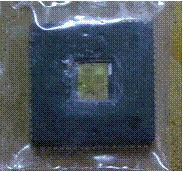credit to: ECU repairer http://mrgears.50webs.com/ECU2.htm
ENGINE CONTROL UNIT (ECU) & DO-IT YOURSELF ECU REPAIRS
Throughout the past 15 years I’ve been a business associate and close mate of Chris, from Meek Automotive. In this time, I have been asked by numerous people in the industry including Chris to write an article about the repair and restoration of ECU’s (and other vehicle computer based control systems). The reasons for these requests are varied and numerous; yet all required something that would assist, show, demonstrate and one hopes, explain a number of things, in particular; -
- If you own a Mitsubishi vehicle model between 1989 and 1994, why you should get the capacitors changed.
- Why it’s probably not that wise to do it yourself and furthermore why your average TV repairman can’t do it.
- And in addition what happens when you try to put a “Chip” in and things go wrong !*#!^
If you own a Mitsubishi vehicle model between 1989 and 1994, why you should get the capacitors changed.
Figure 1. Mitsubishi TR Magna 1991 ECU after “Big Bang”
(Hybrids IC110 & 111 removed for clarity)
In Figure 1. is what remains of a Magna ECU that didn’t have it’s capacitors changed. Note the large diode that normally sits in the middle of the board and third capacitor have been completely disintegrated (Refer to Figure 4 below). This is what can happen to ALL Mitsibishi ECU’s & TCU’s manufactured between 1989 & 1994, local & import. Unfortunately for the customer they didn’t know about the problems until too late. The ECU was damaged beyond repair and the customer was charged over $2000 for a genuine replacement (in 2000)
No, you just cant go down to your Dick Smith or Jaycar and buy replacements, these are custom made chips made for Mitsubishi Automotive by Mitsubishi Electronics and were never available as spare parts.
No disrespect to TV repairmen, oops sorry TV repair persons, they are experts in there field and are knowledgable about how to repair TV’s and other AV equipment. When it comes down to it, if your TV packs it in on you, you aren’t 150Km from the nearest point of call and your whole life isn’t thrown into turmoil because it won’t switch on. The same can’t be said for when your car stops. The inconvenience of a car that won’t run and having to put up with the public transport system (if it will get you to where you need to go, when you need to get there), or bumming a lift with family or friends, ain’t fun. Just shows the cost of a “cheap” repair to an ECU can be quite expensive.
A close up of the ECU shows some of the damage done by not properly repairing the ECU.
As you can see the transistor array has completely blown apart.
Figure above shows what can happen when short cuts are taken in the repair. In figure, it can be seen that the capacitors have been replaced and the job was done neatly but what happened after the ECU was put back into the car. Unfortunately for the owner there was still a fault that remained undiagnosed by the person who diligently replaced the capacitors.
*add-on
**credit to Bart, mivec.co.nz
Capacitors that need to be replaced are marked in red. This is a MIVEC 1G 7035 ECU, and location of the parts varies between models but most Mitsi ecu's look similar. You want to replace these parts with ones rated to 105degs, not the regular 85 deg ones that are originally fitted. Be VERY careful not to damage the tracks when removing the parts, they can be quite tricky to get out if you don't know what your doing. Just for interest, the memory that holds the ECU software is marked in green and whats replaced when an ECU is 'chipped'.












.jpg)
.jpg) So I met this fella in Setapak who which claimed that he's able to custom made me a header, spesifically; for a MIVEC. Using galvanized steel as the base material, he then measures the length and the angle of the pip
So I met this fella in Setapak who which claimed that he's able to custom made me a header, spesifically; for a MIVEC. Using galvanized steel as the base material, he then measures the length and the angle of the pip.jpg)
.jpg)
.jpg)


.jpg)
.jpg)
.jpg)
.jpg)
.jpg)










-+2.JPG)
.jpg)
-+2.JPG)



